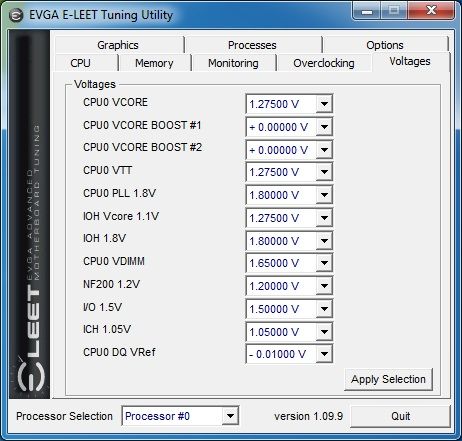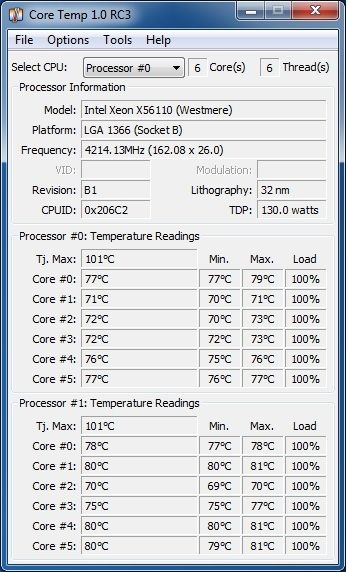Associate
- Joined
- 14 Dec 2010
- Posts
- 495
Hi all,
New to overclocking Socket 1366 (but have loads of experience on Sandy Bridge), and am just getting my head around QPI etc. Wondering if anyone can give me some pointers on the overclock I've got below please? I was hoping for a higher OC than 4.2Ghz - I'm on air cooling however and things are getting very hot. Might some of the OC settings below help with bringing temps down/bringing frequency up?
Also, the other things I'm interested in are:-
1. "Signal" settings - can adjusting these via the IOH etc affect OC performance?
2. In having the X5690 Xeons the multi is set to 26 - my understanding is that I should leave this as high as possible and use the frequency settings from here to adjust the OC - is this correct?
3. These chips can have a max QPI speed of 6.4GT - should I leave this at default of 4.8GT or increase it?
4. Is the memory speed OK at default at 1066Mhz?
5. What's the MCH strap?
6. Last but not least, Uncore frequency? What should I be changing this to?
I appreciate these are all absolutely noob questions, however this really is a bit of a new thing for me - as such I welcome all pointers - thanks a lot in advance...

Default E-LEET page

Voltages

Temperatures (under full load running Intel Burn Test/Prime95)

Overclock settings in BIOS

Voltages1 - BIOS

Voltages 2

Signal (No idea what this even does?)

RAM

New to overclocking Socket 1366 (but have loads of experience on Sandy Bridge), and am just getting my head around QPI etc. Wondering if anyone can give me some pointers on the overclock I've got below please? I was hoping for a higher OC than 4.2Ghz - I'm on air cooling however and things are getting very hot. Might some of the OC settings below help with bringing temps down/bringing frequency up?
Also, the other things I'm interested in are:-
1. "Signal" settings - can adjusting these via the IOH etc affect OC performance?
2. In having the X5690 Xeons the multi is set to 26 - my understanding is that I should leave this as high as possible and use the frequency settings from here to adjust the OC - is this correct?
3. These chips can have a max QPI speed of 6.4GT - should I leave this at default of 4.8GT or increase it?
4. Is the memory speed OK at default at 1066Mhz?
5. What's the MCH strap?
6. Last but not least, Uncore frequency? What should I be changing this to?
I appreciate these are all absolutely noob questions, however this really is a bit of a new thing for me - as such I welcome all pointers - thanks a lot in advance...

Default E-LEET page

Voltages

Temperatures (under full load running Intel Burn Test/Prime95)

Overclock settings in BIOS

Voltages1 - BIOS

Voltages 2

Signal (No idea what this even does?)

RAM






